1061 scholarly books by Catholic University of America Press and 49
have author last names that start with G
1061 scholarly books by Catholic University of America Press and 49
1061 scholarly books by Catholic University of America Press
49 have author last names that start with G have author last names that start with G
49 have author last names that start with G have author last names that start with G
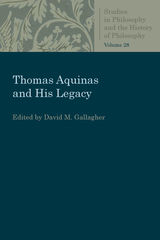
Thomas Aquinas and His Legacy
David M. Gallagher
Catholic University of America Press, 2018
The ten essays in this collection approach the philosophy of Thomas Aquinas not merely as an object of scholarly interest but also as a framework for addressing perennial philosophical questions, even as they are raised and debated in our own times. The f
[more]
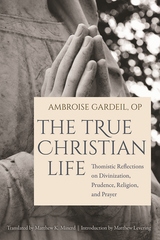
The True Christian Life
Thomistic Reflections on Divinization, Prudence, Religion, and Prayer
Ambroise Gardeil, OP
Catholic University of America Press, 2022
Although not well-known in the English-speaking world, Fr. Ambroise Gardeil, OP (1859-1931) was a Dominican of significant influence in French Catholic thought at the turn of the 20th century. Conservative theologians like Frs. Reginald Garrigou-Lagrange, OP, Michel Labourdette, OP, Jean-Hervé Nicolas, OP and many others hailed him as a careful expositor of the supernaturality of faith, a defender of the theological nature of rational apologetics, and a spiritual master. In his controversial Le Saulchoir: Une école de théologie, Fr. Marie-Dominique Chenu, OP praised Fr. Gardeil as an important Dominican initiator of reforms in historical theology, presenting the latter as a kind of precursor to one of the streams of what is now referred to historically as the “Nouvelle Théologie.” And one cannot read the words of Fr. Gardeil’s contemporary Fr. Antoine Lemonnyer, OP, without hearing echoes and re-echoes of common cause regarding our lofty spiritual vocation, resounding within the halls of the Saulchoir. With such a broad appeal, it is no surprise that in private correspondence, a young Yves Simon, writing to Jacques Maritain, referred to Fr. Gardeil as “The Great Gardeil.”
The True Christian Life provides a thorough and stirring introduction to Fr. Gardeil’s work in spiritual theology. The volume was originally published posthumously through the collaboration of Fr. Gardeil’s nephew, Fr. Henri-Dominique Gardeil, OP and Jacques Maritain. Fr. Ambroise, prior to beginning work on his masterpiece on spiritual experience, La Structure de l'âme et l'expérience mystique, drafted nearly eight-hundred pages that would have set forth a full presentation of moral-ascetical theology. While drafting this massive work, his reflection on the soul’s receptive capacity for grace led him to the two-volume study, La Structure, and he never was able to finish his original designs for a comprehensive study of the Christian moral-spiritual life. Soon after his death, his nephew gathered several essays from the Revue thomiste and Revue de Jeunes, along with a complete-but-unpublished study on prayer. Drafting a lengthy introduction on the basis of Fr. Ambroise’s unpublished notes, Fr. Henri-Dominique assembled a volume of moral / spiritual theology that sets out the principles of many important themes: divinization through grace, Christian prudence /conscience, the virtue of religion, devotion, and prayer.
In his In memoriam written after the passing of Fr. Gardeil, Fr. Reginald Garrigou-Lagrange emphasized Fr. Gardeil’s ability to meditate on a given topic’s central principles, like someone who sees the highest peaks that give structure to the entire mountain range of theology. In this volume, the reader will find a clear and rhetorically striking presentation of the central mysteries of the spiritual life, presented with stirring and beautiful rhetoric by a theological master from the Thomist tradition.
[more]
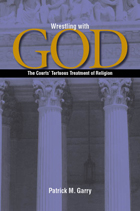
Wrestling with God
The Courts' Tortuous Treatment of Religion
Patrick M. Garry
Catholic University of America Press, 2006
Courts have often treated the two religion clauses of the First Amendment as contradictory, with the free exercise clause used to protect religious practices and the establishment clause employed to limit the public expression of religious beliefs. Wrestling with God not only reconciles the relationship between the two clauses but also distinguishes them in terms of their respective purposes.
[more]
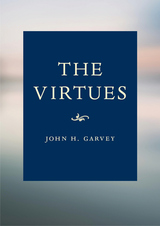
The Virtues
John H. Garvey
Catholic University of America Press, 2022
An ancient question asks what role moral formation ought to play in education. It leads to such questions as, do intellectual and moral formation belong together? Is it possible to form the mind and neglect the heart? Is it wise? These perennial questions take on new significance today, when education — especially, higher education — has become a defining feature in the lives of young people.
Throughout his more than 40 years in academia, John Garvey has reflected on the relationship between intellectual and moral formation, especially in Catholic higher education. For 12 years as the President of The Catholic University of America, he made the cultivation of moral virtue a central theme on campus, highlighting its significance across all aspects of University culture, from University policy to campus architecture.
During his two decades of presiding at commencement exercises, first as Dean of Boston College Law School and then as President of The Catholic University of America, Garvey made a single virtue the centerpiece of his remarks each year. The Virtues is the fruit of those addresses. More reflective than analytical, its purpose is to invite conversation about what it means to live well.
Following Catholic tradition, The Virtues places the theological virtues of faith, hope, and love at the center of the moral life, and the cardinal virtues — justice, temperance, fortitude, and prudence — with them. Alongside these major virtues, Garvey considers a collection of “little virtues,” habits that assist and accompany us in small but important ways on the path to goodness.
Though he treats each virtue individually, a common thread unites his reflections. “The intellectual life depends on the moral life,” Garvey writes. “Without virtue we cannot sustain the practices necessary for advanced learning. In fact, without virtue, it’s hard to see what the purpose of the university is. Learning begins with love (for the truth). If we don’t have that, it’s hard to know why we would bother with education at all.” The Virtues invites its readers, especially students, to appreciate that the cultivation of virtue is indispensable to success, academic or otherwise, and more importantly, essential to their ultimate aim, a life well lived.
[more]

Mysteries of the Lord's Prayer
Wisdom from the Early Church
John Gavin
Catholic University of America Press, 2021
The Lord’s Prayer contains mysteries generally overlooked by most Christians. For the Fathers of the Church, such mysteries or “difficulties”—many of which continue to puzzle modern scholars—marked divinely inspired points for prayer and reflection. Saints Cyprian of Carthage, Augustine of Hippo, Peter Chrysologus, Maximus the Confessor and others grappled with the hidden meanings behind these questions and the fruits of their efforts can inspire contemporary readers.
In this volume John Gavin, SJ explores eight mysteries of the Lord’s prayer in light of the early Church’s wisdom: How can human beings call God “Father”? Where is God the Father? How can God grow in holiness? Was there ever a time when God did not rule? Are there limitations to God’s will? Why should we seek bread? Can we make a deal with God? Does God tempt us? Without ignoring the insights of contemporary exegesis, this volume demonstrates that the responses of the Fathers to these questions have continuing relevance. Not only did they understand the issues surrounding linguistic, textual, and theological difficulties, but they also grasped the nuances of Christ’s words as illuminated by the scriptures as a whole. They provide an interpretation that challenges the mind and transforms the heart.
Mysteries of the Lord's Prayer offers the general reader, as well as scholars, a chance to rediscover a prayer that unites Christians throughout the world. It also includes appendices to aid those who wish to explore the Fathers’ writings on their own for a deeper encounter with the wisdom of the early Church.
[more]
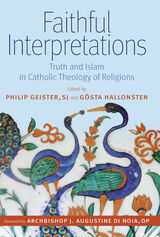
Faithful Interpretations
Truth and Islam in Catholic Theology of Religions
Philip Geister
Catholic University of America Press, 2021
”Theology of Religions” is among the most burning issues within Christian theology today. The challenge to study and discuss different ways of handling conflicting truth claims and religious narratives between religions is taken up by a growing number of theologians across denominational boundaries. This is a common and ecumenical effort undertaken by Christian theologians all over the world. And yet, the impact of specific ecclesiastical or theological traditions on different concepts of theology of religions should not be underestimated. As well known, the Second Vatican council with its pivotal decree Nostra Aetate (On the relation to other religions) not only set the agenda for Catholic theology, but even influenced the wider discussion on the topic. The papers of this volume were all given at a conference in Uppsala, Sweden in October 2017. The structure of Faithful Interpretations follows closely the way the conference was conducted.
A general introduction to the development and present status of ”Theology of Religions” by Marianne Moyaert opens the book. Archbishop J Augustine Di Noia of the Vatican Congregation for the Doctrine of Faith then treats the recent developments in the teaching of the Magisterium regarding theology of religions. Anna Bonta Moreland adresses the issue of Muhammad and Christian Prophecy. Diego R Sarrió Cucarella focuses on early Christian theological views of Islam and concludes that Islam has been from the begining a ”disturbing” factor in the Christian view of salvation history. Wilhelmus G B M Valkenberg discusses the impact of Nostra Aetate on the Church’s relation to Muslims, using especially the precedent of Nicolaus of Cues as regards a constructive approach to Islam. Klaus von Stosch adresses a sensitive issue in Muslim-Christian relations and illustrates the advantages of the comparative theology approach for the theology of religions.
Complementing this perspective, Peter Jonkers offers a hermeneutical perspective on truth claims, and reflects on ”the religious Other” with references to Jacques Derrida among others. Reinhold Bernhardt argues in favour of a biblically grounded “relational-existential” theory of truth, which would be most helpful with regard to other religions. To conclude, the prominent Catholic specialist on Theology of Religions, Gavin D’Costa, widened the perspective by addressing the relation to Judaism from the point of view of the covenant and the promises of the land. Altogether, the papers of this volume give a clear impression of the status of Roman Catholic Theology of Religions.
[more]
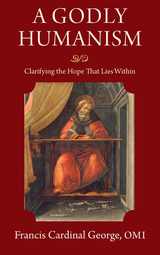
A Godly Humanism
Clarifying the Hope That Lies Within
Francis E. George
Catholic University of America Press, 2015
For Francis Cardinal George, the Catholic Church is not a movement, built around ideas, but a communion, built around relationships. In A Godly Humanism, he shares his understanding of the Church in lively, compelling prose, presenting a way to understand and appreciate the relationships of God to human beings and of human beings to one another. These loving relationships are continually made present to us in and through the Church, from the time of Jesus' first disciples down to our own day. We are introduced to how the spiritual and intellectual life of Christians, aided in every generation by the Holy Spirit working through the Apostles and their successors, resist the danger of splitting apart from one another. Though they take different outward forms at different times, both wisdom and holiness are made possible for every Christian of every station of life. Sign-posting his conversation by the milestones of his own spiritual and intellectual journey, Cardinal George invites us to view the Church and her history in ways that go beyond the categories of politics - through which we find merely human initiative, contrivance, and adjustment - and rather to see the initiative as God's first and foremost. God is the non-stop giver, we are non-stop recipients of his gifts, and the recent popes, no less than the Father of the Church, have made every effort to make us aware of the graces - that is, of the unearned benefits - that God confers on us as Catholics, as Christians, as believers, and simply as human persons. Pope Francis, he reminds us, contrasts human planning with God's providence, and this book is at once an exposition of that providence and a personal response of gratitude for the way it has operated in one man's life.
[more]
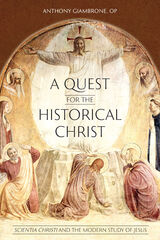
A Quest for the Historical Christ
Scientia Christi and the Modern Study of Jesus
Anthony Giambrone, OP
Catholic University of America Press, 2021
A Catholic Quest for the Historical Christ brings together a collection of interrelated essays on the historical Jesus and primitive Christology. Sensitive to the diverse, but traditionally Protestant assumptions and perspectives of the "Quest" as well as to the widely lamented disconnect between New Testament exegesis and classical dogmatic theology, an alternative approach is proposed in these pages. Ecumenical and conciliar reference points, along with non-confessional historical methods (e.g. archeology) shape the basic project, which nevertheless assumes some distinctive and important Catholic contours. This particular synthesis injects the voice of a missing interlocutor into an established conversation that has not infrequently been both historically confused and dogmatically (and philosophically) numb.
The book is divided into three sections: Historical Foundations, Theological Perspectives, and Jesus and the Scriptures. While the individual chapters represent independent probes, the cumulative argument and arc of the study drives in clear and concerted directions. After a first approach to the Gospel data, attentive at once to historiographical and historical questions, a series of interventions reorienting the present scholarly discussion are suggested. These various, foundational essays lead, finally, to a sustained mediation on the mind of Christ, considered as a unique reader of the Scriptures: a meditation having its proper reflex and reflection in the way Christians themselves, as readers of the Gospels, participate in the Lord's own encounter with the living Word.
[more]
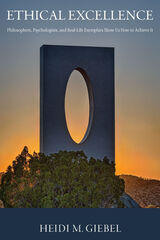
Ethical Excellence
Philosophers, Psychologists, and Real-Life Exemplars Show Us How to Achieve It
Heidi M. Giebel
Catholic University of America Press, 2021
Why do some people achieve ethical excellence while others fail? For example, how did Gloria Lewis overcome a lifetime of difficulty and go on to found a non-profit focused on feeding the homeless while Danny Starrett, despite a seemingly ideal childhood, became a rapist and murderer? Why did some Germans rescue their Jewish neighbors while others stood by?
One recent study found that four personal variables, taken together, differentiated Nazi-era bystanders from rescuers with startling 96.1% accuracy: social responsibility, altruistic moral reasoning, empathic concern, and risk-taking—traits related to ethical excellences (virtues) like justice, benevolence, and courage. Drawing from the combined wisdom of classical Socratic and Confucian philosophy, recent work in psychology, and the lived experience of recognized moral heroes, the book focuses on how each of us can work toward ethical excellence, becoming more like Lewis and neighbor-rescuers than like Starrett and Nazi-era bystanders.
The ancient Socratic and Confucian philosophical traditions offer surprisingly sophisticated advice regarding moral education. Because research in psychology helps us assess the feasibility of cultivating virtue in ourselves and those we influence, Ethical Excellence focuses on combining sound philosophical analysis of ethical virtue and related concepts with relevant empirical research on how these concepts are manifested and developed in everyday practice. Willpower, for example, contributes to development of temperance or moderation, grit relates to perseverance, and empathy is connected to benevolence.
Finally, the study of ethically exceptional people—moral heroes or exemplars—serves as living proof that ethical excellence is possible, and exemplars can provide inspiration to attempt it ourselves and guidance regarding how to do so successfully. Relevant stories and excerpts from the author’s own interviews with award-winning ethical exemplars complement the use of philosophical virtue theory and psychological research on virtue-relevant practice. Together, these three approaches—philosophy, psychology, and biography—help to triangulate” ethical excellence and its achievement, presenting a much clearer and more complete picture than we can get from any one of these methods alone.
[more]
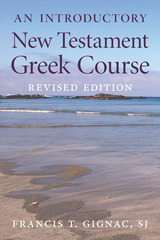
An Introductory New Testament Greek Course, Revised Edition
Francis T. Gignac, SJ
Catholic University of America Press, 2015
Many Christians have the desire to read the New Testament in its original language. Unfortunately, books that introduce the student to New Testament Greek either tend to be long-winded, or overly simplified, or both. In this book, legendary scholar of biblical Greek, the late Frank Gignac provides a straight-forward "just the facts" approach to the subject. In fifteen lessons, he presents the basics of the grammar and the vocabulary essential for reading the Gospels in the original language. All the reader need do is to supply the desire to learn. As Gignac writes, "good luck as you begin to learn another language! It may be sheer drudgery for a while, but the thrill will come when you begin to read the New Testament in the language in which it was written."
[more]
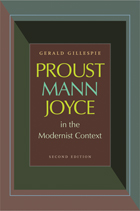
Proust, Mann, Joyce in the Modernist Context, Second Edition
Gerald Gillespie
Catholic University of America Press, 2010
The original version of Proust, Mann, Joyce in the Modernist Context strove to show how a kindred encyclopedic drive and sacramental sense informed their responses to the epochal trauma, yielding three distinct and monumental visions of the human estate by the 1920s.
[more]
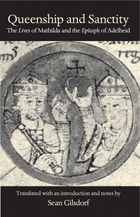
Queenship and Sanctity
The Lives of Mathilda and the Epitaph of Adelheid (Medieval Texts in Translation)
Sean Gilsdorf
Catholic University of America Press, 2004
Queenship and Sanctity brings together for the first time in English the anonymous Lives of Mathilda and Odilo of Cluny's Epitaph of Adelheid. Richly annotated, with an extensive introduction placing the texts and their subjects in historical and hagiographical context, it provides teachers and students with a crucial set of sources for the history of Europe (particularly Germany) in the tenth and eleventh centuries, for the development of sacred biography and medieval notions of sanctity, and for the life of aristocratic and royal women in the early Middle Ages.
[more]
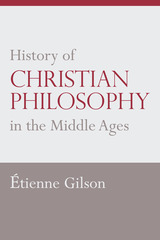
History of Christian Philosophy in the Middle Ages
Etienne Gilson
Catholic University of America Press, 2019
"A comprehensive analysis of philosophical thought from the second century to the fifteenth century, from the Greek apologists through Nicholas of Cusa. This work is Gilson's magnum opus." - Journal of the History of Ideas
[more]
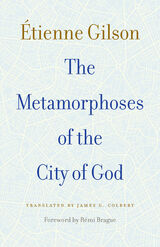
The Metamorphoses of the City of God
Etienne Gilson
Catholic University of America Press, 2021
Étienne Gilson (1884-1978) was a French philosopher and historian of philosophy, as well as a scholar of medieval philosophy. In 1946 he attained the distinction of being elected an "Immortal" (member) of the Académie française. He was nominated for the Nobel Prize in Literature in 1959 and 1964.
The appearance of Gilson's Metamorphosis of the City of God, which were originally delivered as lectures at the University of Louvain, Belgium, in the Spring of 1952, coincided with the first steps toward what would become the European Union. The appearance of this English translation coincides with the upheaval of Brexit. Gilson traces the various attempts of thinkers through the centuries to describe Europe's soul and delimit its parts. The Scots, Catalonians, Flemings, and probably others may nod in agreement in Gilson's observation on how odd would be a Europe composed of the political entities that existed two and a half centuries ago. Those who think the European Union has lost its soul may not be comforted by the difficulty thinkers have had over the centuries in defining that soul. Indeed the difficulties that have thus far prevented integrating Turkey into the EU confirm Gilson's description of the conundrum involved even in distinguishing Europe's material components. And yet, the endeavor has succeeded, so that the problem of shared ideals remain inescapable. One wonders which of the thinkers in the succession studied by Gilson might grasp assent and illuminate the EU's path.
[more]
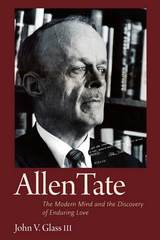
Allen Tate
John V. Glass III
Catholic University of America Press, 2016
This study reconsiders and reassesses the work of Allen Tate as a poet whose themes and expression place him among the most studied and canonical Modernists of the last century. Allen Tate (1899-1979), a former Poet Laureate of the US, although generally regarded during his lifetime as one of the twentieth century's preeminent literary critics and men of letters, has been largely overlooked by critics in the years since his death. John V. Glass III rectifies this by tracing the development of Tate's thought and verse from his early years as a student at Vanderbilt in the 1920s through his final terza-rima sequence completed in the 1950s. Tate's poetry in the intervening years charts the course of an American modernist who brings to bear on the problems of his age the unique perspective of a southerner, one who refuses either to accept sentimentality or to repudiate the past in his search for a solution to the dissociation of sensibility.
[more]
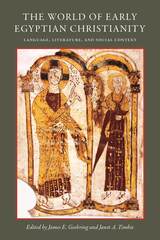
The World of Early Egyptian Christianity
Language, Literature, and Social Context (CUA Studies in Early Christianity)
James E. Goehring
Catholic University of America Press, 2007
With increasing interest in early Egyptian (Coptic) Christianity, this volume offers an important collection of essays about Coptic language, literature, and social history by the very finest authors in the field. The essays explore a wide range of topics and offer much to the advancement of Coptic studies
[more]
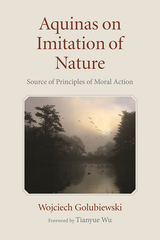
Aquinas on Imitation of Nature
Source of Principles of Moral Action
Wojciech Golubiewski
Catholic University of America Press, 2022
Aquinas on Imitation of Nature highlights and explores the doctrine of the imitation of nature, a crucial aspect of Aquinas’ metaethics and fills the gap in research on Aquinas’ moral doctrine and theory of action. It conveys Aquinas’ doctrine of the imitation of nature as a natural feature of right practical reason regarding moral thinking and action, indeed as an indispensable feature of virtuous flourishing in individual and communal aspects of human life.
The book starts with an overview of some of recent interpretations of Aquinas’ moral doctrine and natural law, introducing the need to explore the role of the imitation of nature in human practical reasoning and action in this area of Aquinas’ teaching. The chapters that follow are based on a careful reading of selected texts of Aquinas, and gradually develop a thorough and comprehensive picture of his doctrine of the imitation of nature as a source of practical principles. The final chapter provides various examples of how Aquinas understands the imitation of nature in the realm of moral reasoning and action.
The originality of this volume comes from its account of Aquinas’ medieval doctrine of the imitation of nature, in light of which the principles of right practical reason and virtuous action are congruent with and epistemologically dependant upon the basic terms of the movements of natural, sensible, non-rational agents. Through its thorough reading of Aquinas on the imitation of nature, the book aims to open new ways of appropriation of the metaphysical and natural tenets of his moral doctrine in the areas of theory of action, practical reason, natural law, and contemporary virtue ethics.
[more]
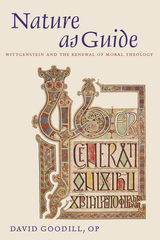
Nature as Guide
Wittgenstein and the Renewal of Moral Theology
David Goodill, OP
Catholic University of America Press, 2022
Wittgenstein influenced a generation of philosophers and theologians, with works such as Fergus Kerr’s Theology After Wittgenstein showing the relevance of Wittgenstein’s philosophy for contemporary questions in theology. Nature as Guide follows many of the insights of this earlier generation of Wittgenstein influenced scholars, to bring Wittgenstein into conversation with contemporary Catholic moral theology.
The first four chapters of the book provides a reading of key themes in Wittgenstein’s philosophy, and draw among others on G.E.M. Anscombe to situate Wittgenstein in relation to the Platonic tradition. Understanding the relationship between grammar, metaphysics and nature is central to this tradition and these themes are examined through an account of Wittgenstein’s philosophical development. These four chapters also provides a critical perspective on Wittgenstein’s thought, engaging with the criticisms of Wittgenstein offered by philosophers such as Rhees Rush and William Charlton.
Chapter five lays the groundwork for a dialogue between Wittgenstein and moral theology. Firstly, by examining how open Wittgenstein’s philosophy is to dialogue with theology, and secondly through proposing the use of Servais Pinckaers’ definition of moral theology to structure the conversation developed in subsequent chapters.
Pinckaers’ definition is based upon St Thomas Aquinas’ presentation of the principles of human acts in the Prima Secundae of the Summa Theologiae and the final three chapters focus on the question of human acts and their basis in human nature. The reading of Wittgenstein developed in the first part of the book is brought into dialogue with the tradition of Catholic moral theology represented by Pinckaers and other students of St Thomas, such as Anscombe, Josef Pieper, Herbert McCabe, Jean Porter and Alasdair MacIntyre. The book finishes with McCabe’s account of the transformation of human nature through God’s Word, showing how Wittgenstein’s understanding of human practices can shed light on the life of grace.
[more]
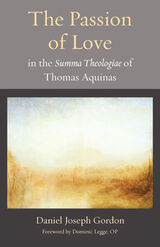
The Passion of Love in the Summa Theologiae of Thomas Aquinas
Daniel Joseph Gordon
Catholic University of America Press, 2023
This book is an introduction to three questions on love according to St. Thomas Aquinas (Summa Theologiae I–II, qq. 26–28). These three questions reflect on the nature of love (q. 26), the causes of love (q. 27), and the effects of love (q. 28). It is thus an introduction to the entire phenomenon of love, both as a bodily passion and an act of the will. The purpose is to present the Thomistic and broadly scholastic account of human and divine
love from a philosophical and theological perspective. It aims to be a theological and philosophical study of the topic, useful both for a graduate/professional audience, as part of an undergraduate or graduate course, and perhaps for the educated reader. The thesis of the book is that, contrary to contemporary conceptions, not all loves are created equal. Some loves perfect us and some loves corrupt us. The worth of a love depends on its object and end. St. Thomas thus presents an objective and teleological account of human and divine love that is of philosophical and theological interest. The method is broadly exegetical, presenting a careful reading of the text and supplying the philosophical and theological background which the text of Aquinas assumes. The scope of the work is limited to three questions (ST I–II, qq. 26–28). References to interpretative disputes of Aquinas and references to further resources in the secondary literature will be mostly limited to the footnotes, making the body of the text accessible to more readers.
[more]

A Contemporary Introduction to Thomistic Metaphysics
Michael Gorman
Catholic University of America Press, 2023
A Contemporary Introduction to Thomistic Metaphysics provides the reader with an introductory presentation of key themes in Thomistic metaphysics. There are many such books, but this one is, to use a phrase Michael Gorman has adopted, “analytic-facing,” i.e., it presents things in dialogue with analytic philosophy. Sometimes that means disagreeing with analytic proposals (for example, possible worlds), and sometimes it means agreeing with them (for instance, making ample use of Ryle’s notion of “systematically misleading expressions”).
What’s more, it (gently) takes a somewhat deflationary attitude towards many things metaphysicians like to talk about, such as accidents, universals, and the like. By “deflationary” Gorman means that such items are taken seriously, but their ontological status is taken down a notch: features, universals, possible worlds, and other such things are understood in terms of what substances are and what substances are. Substances are ”basic beings,” and other things are what they are only in relation to substances. Of course this is Aristotle 101, but metaphysicians, Aristotelians included, often slip into treating non-substances as mini-substances, and Gorman pushes back against this throughout.
A Contemporary Introduction to Thomistic Metaphysics begins by explaining what philosophy is, what metaphysics is, and how these relate to other kinds of thinking. It then moves through a series of topics, ending with a brief look at applications of metaphysical thinking in theology.
[more]
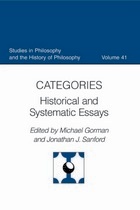
Categories
Historical and Systematic Essays (Studies in Philosophy and the History of Philosophy, Volume 41)
Michael Gorman
Catholic University of America Press, 2004
The essays in this volume, written by a mix of well-established and younger philosophers, bridge divides between historical and systematic approaches in philosophy as well divides between analytical, continental, and American traditions.
[more]
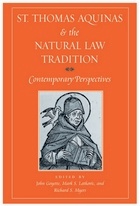
St. Thomas Aquinas and the Natural Law Tradition
Contemporary Perspectives
John Goyette
Catholic University of America Press, 2004
To explore and evaluate the current revival, this volume brings together many of the foremost scholars on natural law. They examine the relation between Thomistic natural law and the larger philosophical and theological tradition. Furthermore, they assess the contemporary relevance of St. Thomas's natural law doctrine to current legal and political philosophy.
[more]
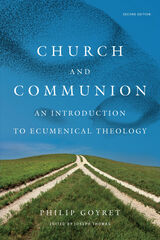
Church and Communion
An Introduction to Ecumenical Theology, Second Edition
Philip Goyret
Catholic University of America Press, 2021
This book is about ecumenism, from a Catholic point of view. The first part, chapters 1 and 2, describe the history of divisions within the Church, as well as of the efforts to bring about Christian unity. The second part examines Ecumenism from a systematic theological perspective.
This first part takes into account the different factors that led to definitive ruptures within the Church, which usually are not only theological. The text gives useful information about what happened after the respective divisions as well as about the various attempts to restore unity, the development of the Ecumenical Movement in the 20th Century, and the current situation of ecumenical dialogue within the Catholic Church. While offering insight into the sad history that has led to the present disunity, this work also highlights the way Christians have sought to bring to fulfill the petition of Christ that his disciples might be one, as He and the Father are one.
The second part―chapters three, four and five―offers a systematic theological analysis of unity in the Church, from the point of view of dogmatic theology. We find here an explanation of the Catholic concept of ecumenism, of how Catholic theology understands the unity of the Church, and, finally, of the Catholic principles which sustain the efforts for regaining unity in the Church. The Second Vatican Council, and particularly the Constitution Lumen gentium and the Decree Unitatis redintegratio, are at the foundation of these reflections. At the same time, since the theology of the Church and the life of the Church are intimately connected, there is a profound link between this dogmatic section and the earlier historical section.
The last chapter, about the practice of ecumenism, is also written from a theological perspective, but with more links with life and spirituality. The chapter recalls that ecumenism can never simply remain a set of theological principles, but rather inspires an attitude and action in charity which are essential to the Christian life.
[more]
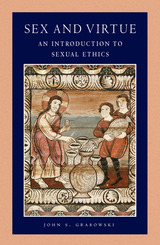
Sex and Virtue
An Introduction to Sexual Ethics (Catholic Moral Thought, Volume 2)
John S. Grabowski
Catholic University of America Press, 2003
This book provides a theological foundation for consideration of the moral dimensions of human sexuality from a Roman Catholic perspective.
[more]

Transformed in Christ
John S. Grabowski
Catholic University of America Press, 2017
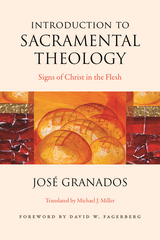
Introduction to Sacramental Theology
Signs of Christ in the Flesh
Jose Granados
Catholic University of America Press, 2021
Introduction to Sacramental Theology presents a complete overview of sacramental theology from the viewpoint of the body. This viewpoint is supported, in the first place, by Revelation, for which the sacraments are the place where we enter into contact with the body of the risen Jesus. It is a viewpoint, secondly, which is firmly rooted in our concrete human bodily experience, thus allowing for a strong connection between faith and life, creation and redemption.
From this point of view, the treatise on the sacraments occupies a strategic role. For the sacraments appear, not as the last of a series of topics (after dealing with Creation, Christ, the Church), but as the original place in which to stand in order to contemplate the entire Christian mystery. This point of view of the body, which resonates with contemporary philosophy, sheds fruitful light on classical themes, such as the relationship of the sacraments with creation, the composition of the sacramental sign, the efficacy of the sacraments, the sacramental character, the role of the minister, or the relationship of the sacrament with the Church as a sacrament.
As a result of this approach, the Eucharist takes on a central role, since this is the sacrament where the body of Jesus is made present. The rest of the sacraments are seen as prolongations of the eucharistic body, so as to fill all the time and space of the faithful. This foundation of the theology of the sacraments in eucharistic theology is supported by an analysis of the patristic and medieval tradition.
In order to support its conclusions, Introduction to Sacramental Theology examines the doctrine of Scripture (especially St. John and St. Paul), the main patristic and medieval authors (St. Augustine, Hugh of St. Victor, St. Bonaventure, St. Thomas Aquinas), the response of Trent to the protestant challenges, up to modern authors such as Scheeben, Rahner, Ratzinger, or Chauvet, including the teaching of Vatican II about the Church as a kind of sacrament.
[more]
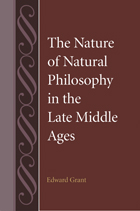
The Nature of Natural Philosophy in the Late Middle Ages (Studies in Philosophy and the History of Philosophy, Volume 52)
Edward Grant
Catholic University of America Press, 2010
In this volume, distinguished scholar Edward Grant identifies the vital elements that contributed to the creation of a widespread interest in natural philosophy, which has been characterized as the "Great Mother of the Sciences."
[more]
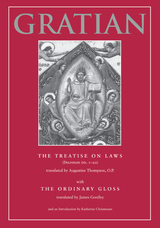
The Treatise on Laws (Decretum DD. 1-20) with the Ordinary Gloss (Studies in Medieval and Early Modern Canon Law, Volume 2)
Gratian
Catholic University of America Press, 1993
No description available
[more]
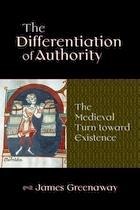
The Differentiation of Authority
The Medieval Turn toward Existence
James Greenaway
Catholic University of America Press, 2012
In this study, James Greenaway explores the philosophical continuity between contemporary Western society and the Middle Ages. Allowing for genuinely modern innovations, he makes the claim that the medieval search for order remains fundamentally unbroken in our search for order today.
[more]
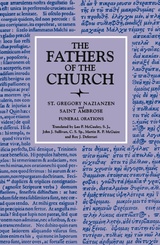
Funeral Orations
Saint Gregory Nazianzen
Catholic University of America Press, 1953
No description available
[more]
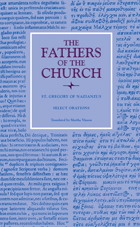
Select Orations
Martha Gregory of Nazianzus
Catholic University of America Press, 2003
No description available
[more]
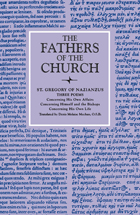
Three Poems
Concerning His Own Affairs, Concerning Himself and the Bishops, and Concerning His Own Life
Saint Gregory of Nazianzus
Catholic University of America Press, 1987
No description available
[more]
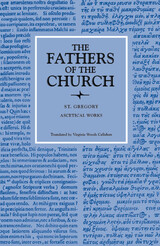
Ascetical Works
Saint Gregory of Nyssa
Catholic University of America Press, 1967
No description available
[more]
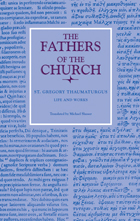
Life and Works
Saint Gregory Thaumaturgus
Catholic University of America Press, 1998
This volume presents the earliest and most important life of Gregory Thaumaturgus, preached by St. Gregory of Nyssa, and all the works that can be attributed to Gregory Thamumaturgus himself. It includes his Address of Thanksgiving to his teacher Origen; his Christian adaptation and interpretation of the Old Testament book of Ecclesiastes; his regulations restoring order in the Christian community after an invasion by the Goths; a remarkable treatise on God's ability to suffer and another on the Trinity; and two small texts that may or may not have been written by him.
[more]
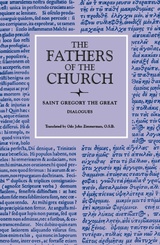
Dialogues
Saint Gregory the Great
Catholic University of America Press, 1959
No description available
[more]
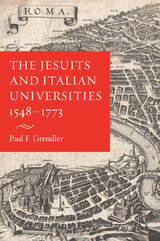
The Jesuits and Italian Universities, 1548-1773
Paul F. Grendler
Catholic University of America Press, 2017
The Society of Jesus arrived in Italy in 1540 brimming with enthusiasm to found new universities. These would be better than Italian universities, which the Jesuits believed were full of professors teaching philosophical atheism to debauched students. The Jesuits also wanted to become professors in existing Italian universities. They would teach Christian philosophy, true theology, sound logic, eloquent humanities, and practical mathematics. They would exert a positive moral influence on students.
The Jesuits were rejected. Italy already had fourteen universities famous for their research and teaching. They were ruled by princes and cities who refused to share their universities with a religious order led by Spaniards. Between 1548 and 1773 the Jesuits made sixteen attempts, from Turin in the north to Messina in Sicily, to found new universities or to become professors in existing universities. They had some successes, as they helped found four new universities and became professors of mathematics in three more universities. But they suffered nine total failures. The battles between universities, civil governments, and the Jesuits were memorable. Lay professors accused the Jesuits of teaching philosophy badly. The Jesuits charged that Italian professors delivered few lectures and skipped most of Aristotle. Behind the denunciations were profound differences about what universities should be.
Italian universities were dominated by law and the Jesuits emphasized the humanities and theology. Nevertheless, the Society of Jesus had an impact. They added cases of conscience to the training of clergymen. They made four years of study the norm for a degree in theology. They offered a student-centered alternative to Italian universities that focused on research and ignored student misbehavior.
Paul Grendler tells a new story based on years of research in a dozen archives. Anyone interested in the volatile mix of universities, religion, and politics will find this book fascinating and instructive, as will anyone who contemplates what it means to be a Catholic university.
The Jesuits were rejected. Italy already had fourteen universities famous for their research and teaching. They were ruled by princes and cities who refused to share their universities with a religious order led by Spaniards. Between 1548 and 1773 the Jesuits made sixteen attempts, from Turin in the north to Messina in Sicily, to found new universities or to become professors in existing universities. They had some successes, as they helped found four new universities and became professors of mathematics in three more universities. But they suffered nine total failures. The battles between universities, civil governments, and the Jesuits were memorable. Lay professors accused the Jesuits of teaching philosophy badly. The Jesuits charged that Italian professors delivered few lectures and skipped most of Aristotle. Behind the denunciations were profound differences about what universities should be.
Italian universities were dominated by law and the Jesuits emphasized the humanities and theology. Nevertheless, the Society of Jesus had an impact. They added cases of conscience to the training of clergymen. They made four years of study the norm for a degree in theology. They offered a student-centered alternative to Italian universities that focused on research and ignored student misbehavior.
Paul Grendler tells a new story based on years of research in a dozen archives. Anyone interested in the volatile mix of universities, religion, and politics will find this book fascinating and instructive, as will anyone who contemplates what it means to be a Catholic university.
[more]
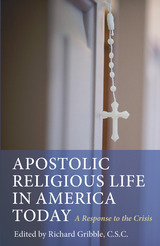
Apostolic Religious Life in America Today
A Response to the Crisis
Richard Gribble
Catholic University of America Press, 2011
Divided into two parts, this volume first presents an analysis of the problem and secondly a solution to place apostolic religious life on a positive trajectory in the 21st century.
[more]
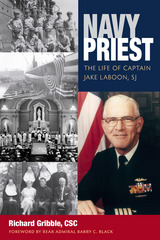
Navy Priest
Richard Gribble
Catholic University of America Press, 2015
Navy Priest is a compelling biography of the Jesuit priest and Navy chaplain John Francis (Jake) Laboon. Father Jake made a significant contribution to the United States Navy, both as a World War II submarine officer and, most prominently, during a 22-year career as a chaplain. Laboon served as the first chaplain for the Fleet Ballistic Missile Submarine Program, but also served as chaplain at his alma mater the United States Naval Academy, undertook a tour of duty with the US Marines in Vietnam, where he was awarded the Legion of Merit, and later served as Fleet Chaplain of the United States Atlantic Fleet.
[more]
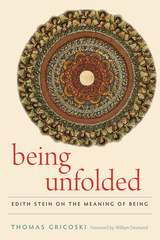
Being Unfolded
Edith Stein on the Meaning of Being
Thomas Gricoski
Catholic University of America Press, 2020
Being Unfolded responds to the question, ‘What is the meaning of being for Edith Stein.’ In Finite and Eternal Being Stein tentatively concludes that ‘being is the unfolding of meaning.’ Neither Stein nor her commentators have elaborated much on this suggestive phrase. Thomas Gricoski argues that Stein’s mature metaphysical project can be developed into an ‘ontology of unfolding.’ The differentiating factor of this ontology is its resistance to both existentialism and essentialism. The ‘ontology of unfolding’ is irreducibly relational.
Being Unfolded proceeds by testing a relational hypothesis against Stein’s theory of the modes of being (actual, essential, and mental being). From the phenomenological perspective, Gricoski examines Stein’s theory of the relation of consciousness and being. From the scholastic perspective, he examines Stein’s account of the relation of essence and existence in material being, living being, and human being. And from both perspectives he considers the relation of divine being to actual being and their essences. This book is limited to Stein’s theory of the meaning of being, without making an explicit confrontation with Heidegger. It offers two primary contributions to Stein studies: a systematic analysis of Stein’s modes of being, especially essential being, and an exposition and expansion of her overlooked concept of unfolding. Being Unfolded also contributes to the broader field of contemporary metaphysics by developing Stein’s theory of being as an experiment in fundamental ontology. While other relational ontologies focus on relations between beings, this exploration of unfolding examines being’s inner self-relationality.
[more]
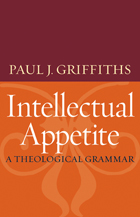
Intellectual Appetite
A Theological Grammar
Paul J. Griffiths
Catholic University of America Press, 2009
The appetite for knowledge--wanting to know things--is very strong in humans. Some will sacrifice all other goods (sex, power, food, life itself) for it. But this is not a simple appetite, and this book treats some of its complications, deformations, beauties, and intensities.
[more]
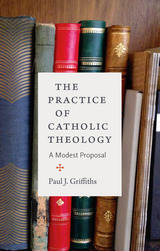
The Practice of Catholic Theology
Paul J. Griffiths
Catholic University of America Press, 2016
In The Practice of Catholic Theology: A Modest Proposal, Paul J. Griffiths has written a how-to book for Catholic theologians that will both instruct beginners and challenge long-time practitioners to sharpen their understanding of their craft. He defines Catholic theology as the practice of thinking, speaking, and writing about the God of Christian confession; so understood, it's something that anyone can learn to do. Personal sanctity is not required, but as with any other practice, practitioners of this beautiful and elevated thought-performance need to know some things and to develop some skills in order to be able to perform it.
[more]
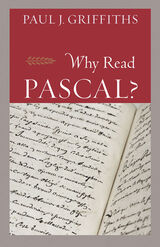
Why Read Pascal?
Paul J. Griffiths
Catholic University of America Press, 2021
Blaise Pascal (1623-1662) is known in the English-speaking world principally for the wager (an argument that it is rational to do what will affect belief in God and irrational not to), and, more generally, for the Pensées, a collection of philosophical and theological fragments of unusual emotional and intellectual intensity collected and published after his death. He thought and wrote, however, about much more than this: mathematics; physics; grace, freedom, and predestination; the nature of the church; the Christian life; what it is to write and read; the order of things; the nature and purpose of human life; and more. He was among the polymaths of the seventeenth century, and among the principal apologists of his time for the Catholic faith, against both its Protestant opponents and its secular critics.
Why Read Pascal? engages all the major topics of Pascal's theological and philosophical writing. It provides discussion of Pascal's literary style, his linked understandings of knowledge and of the various orders of things, his anthropology (with special attention to his presentation of affliction, death, and boredom), his politics, and his understanding of the relation between Christianity and Judaism. Pascal emerges as a literary stylist of a high order, a witty and polemical writer (never have the Jesuits been more thoroughly eviscerated), and, perhaps above all else, as someone concerned to show to Christianity's cultured despisers that the fabric of their own lives implies the truth of Christianity if only they can be brought to look at what their lives are like.
Why Read Pascal? is the first book in English in a generation to engage all the principal themes in Pascal's theology and philosophy. The book takes Pascal seriously as an interlocutor and as a contributor of continuing relevance to Catholic thought; but it also offers criticisms of some among the positions he takes, showing, in doing so, how lively his writing remains for us now.
[more]
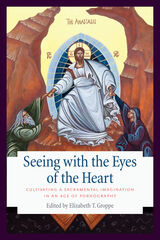
Seeing with the Eyes of the Heart
Cultivating a Sacramental Imagination in an Age of Pornography
Elizabeth T. Groppe
Catholic University of America Press, 2020
In an era in which the internet has made pornography readily accessible, Seeing with the Eyes of the Heart offers a theological critique of pornography and retrieves from the Christian tradition an alternative visual culture. This visual culture is constituted by both the character of the images we behold and the manner in which we see. Contributors include psychologists William M. Struthers and Jill Manning, who address the neurological effects of pornography and its influences on personal, familial, and social life. Their professional analysis is complemented by the testimony of a young man in recovery from pornography addiction. In an exposition of Christian visual culture, Orthodox iconographer Randi Sider-Rose describes the spiritual discipline of icon writing, Danielle M. Peters, S.T.D., surveys the iconography and art of Marian traditions, and art historian Dianne Phillips elucidates the meaning of divine desire as evident in Catholic visual culture of the late medieval and early modern periods. Catholic theologians Ann W. Astell, Nathanial Peters, Boyd Taylor Coolman, and Nicolas Ogle discuss specific practices and dimensions of the Catholic tradition that can contribute to the cultivation of sacramental vision, and David W. Fagerberg, Kimberly Hope Belcher, Jennifer Newsome Martin, and John C. Cavadini offer reflections on sacramental imagination and the healing of vision.
Seeing with the Eyes of the Heart is a work of scholarship composed with pastoral care and concern, and it will be serviceable to both classroom teachers and pastoral ministers. A special feature of the book is an inset of seventy-two full-color plates featuring both classic and contemporary works of Christian iconography and art. The essays and images invite readers to behold in beauty the truth that we are created by the triune God not for sexual objectification but with a sacramental vocation to deification through Christ and the Holy Spirit of love.
[more]
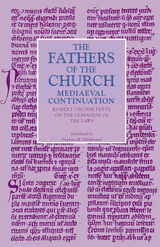
On the Cessation of the Laws
Robert Grosseteste
Catholic University of America Press, 2012
In On the Cessation of the Laws, Grosseteste draws out the theological, christological, and soteriological issues implicit in the question of the relationship between the Old and New Covenants.
[more]
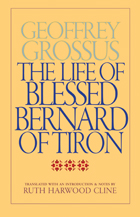
The Life of Blessed Bernard of Tiron
Geoffrey Grossus
Catholic University of America Press, 2009
The first English translation of the Vita Bernardi, this book makes accessible to medieval and religious historians one of the more interesting and lively stories of the twelfth century.
[more]
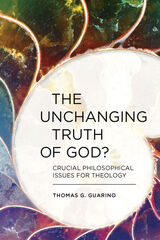
The Unchanging Truth of God? Crucial Philosophical Issues for Theology
Thomas G. Guarino
Catholic University of America Press, 2021
It has long been a cornerstone of Catholic belief that Christians can be intelligent and creative thinkers—inquisitive seekers after truth—as well as men and women of ardent faith. Catholics are entirely committed, then, to the claim that human rationality and religious faith are complementary realities since they are equally gifts of God.
But understanding precisely how faith and reason cohere has not always been a smooth path. At times, theology has allowed philosophy to become the leading (and baleful) partner in the faith-reason relationship, thereby lapsing into rationalism or relativism. At other times, theology has been tempted by fideism, with philosophy now regarded as little more than a pernicious intruder corrupting Christian faith, life and thought.
The essays in this volume display how Catholicism understands the proper confluence between philosophy and theology, between human rationality and Christian faith, between the natural order and supernatural grace. To illustrate these points, the book draws on a long line of Christian thinkers: Origen, Augustine, Anselm, Aquinas and, in our own day, Fides et Ratio of John Paul II and the Regensburg Address of Benedict XVI.
How is theology always a “Jewgreek” enterprise—to borrow a term from Jacques Derrida—always a combination of the biblical (Hebraic) and philosophical (Hellenic) traditions? Why is one particular element of philosophy, metaphysics, essential for the intelligibility and clarity of Catholic theology? Why is this so much the case that John Paul II could state emphatically: “a philosophy which shuns metaphysics would be radically unsuited to the task of mediation in the understanding of Revelation”?
But theology cannot simply be about dialogue with philosophers of yesteryear. Theology must constantly incorporate fresh thinking and remain in lively conversation with an extensive variety of contemporary perspectives. This book displays how reciprocity and absorption has been characteristic of theology’s past and must represent its future as well.
[more]
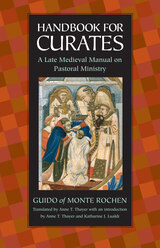
Handbook for Curates
A Late Medieval Manual on Pastoral Ministry
Guido of Monte Rochen
Catholic University of America Press, 2011
Guido of Monte Rochen's Handbook for Curates became the most popular pastoral manual at the close of the Middle Ages as thousands of copies were printed in Europe.
[more]
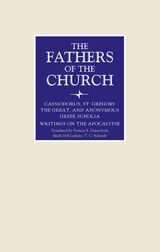
Writings on the Apocalypse
Francis X. Gumerlock
Catholic University of America Press, 2022
The Apocalypse or Book of Revelation is one of the most frequently discussed books of the biblical canon and arguably one of the most difficult to interpret. This volume contains three texts as examples of late ancient Christian interpretation of its intriguing visions. It also includes a comprehensive introduction to each text by its respective translator. Brief Explanations of the Apocalypse by Cassiodorus (c. 580), translated by Francis X. Gumerlock from Latin and published in English for the first time in this volume, served as an introduction to the Book of Revelation for Cassiodorus’s students at the Vivarium, a monastery in southern Italy. Cassiodorus divided the Apocalypse into 33 sections, corresponding to the age of Jesus at his Passion, and expressed his belief that John’s visions were revelations of the end of the world, including the Second Coming of Christ for judgment, the defeat of the Antichrist, the general resurrection, and the arrival of the heavenly Kingdom. Testimonies of Gregory the Great on the Apocalypse, translated from Latin by Mark DelCogliano and also published here for the first time in English, is a collection of 55 excerpts on the Apocalypse from the writings of St. Gregory the Great (d. 604) compiled by an anonymous author. Drawn mainly from Gregory’s Moralia, but also from his Book on Pastoral Care and homilies, the excerpts, which are arranged from Revelation 1.4 to 22.17, illustrate Gregory’s grammatical exegesis of the Apocalypse, his interpretation of various figures in the Apocalypse, and his attempt to reconcile certain passages in the Apocalypse with seemingly contradictory texts from other parts of Scripture. The anonymous Greek Scholia on the Apocalypse contains 39 exegetical notes on chapters 1-14 of the Apocalypse, which reveal influences of Origen and Didymus the Blind, among others. The notes provide “spiritual” interpretations of the various passages and give attention to the interpretation of certain words that appear in the Book of Revelation. This new translation from the Greek by T. C. Schmidt utilizes all the Greek editions. Furthermore, its introductory matter contains updates on the Scholia from the latest scholarship and compares each scholion with interpretations found in various patristic authors, mainly of Alexandrian heritage.
[more]
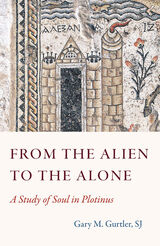
From the Alien to the Alone
A Study of Soul in Plotinus
Gary M. Gurtler, SJ
Catholic University of America Press, 2022
Plotinus is often accused of writing haphazardly, with little concern for the integral unity of a treatise. By analyzing each treatise as a whole, From the Alien to the Alone finds much evidence that he constructed them skillfully, with the parts working together in subtle ways. This insight was also key in translating several central passages by considering the flow of the argument as a whole to shed light on the difficulties in these passages as well as reveal the structure often latent in particular treatise. The volume also serves to clarify Plotinus’ rich use of images. Commentators, for instance, tend to take the images of light and warmth to explain the relation of soul and body as in conflict, with light casting out warmth. A close look at the text, however, reveals that Plotinus uses each image to correct the limitations of the other. Thus, since the soul is incorporeal, it is actually more transcendent than light and as activating the body is more completely present than warmth. Similarly, recent commentators are quick to take the related impassibility of the soul as implying a Cartesian gap between body and soul. The problem Plotinus faces, however, is that his description of the soul’s pervasive presence in the body jeopardizes its impassibility as in the intelligible. His effort then is actually to introduce a gap that preserves the soul’s nature, rather than overcome a gap that would make the very existence of the body problematic.
While this work confirms much recent scholarly consensus on Plotinus, many of Gurtler's interpretations and general conclusions give constructive challenges to some existing modes of understanding Plotinus’ thought. The arguments and their textual evidence, with the accompanying Greek, provide the reader with direct evidence for testing these conclusions as well as appreciating the nature of Plotinus’ philosophizing.
[more]
READERS
Browse our collection.
PUBLISHERS
See BiblioVault's publisher services.
STUDENT SERVICES
Files for college accessibility offices.
UChicago Accessibility Resources
home | accessibility | search | about | contact us
BiblioVault ® 2001 - 2024
The University of Chicago Press









